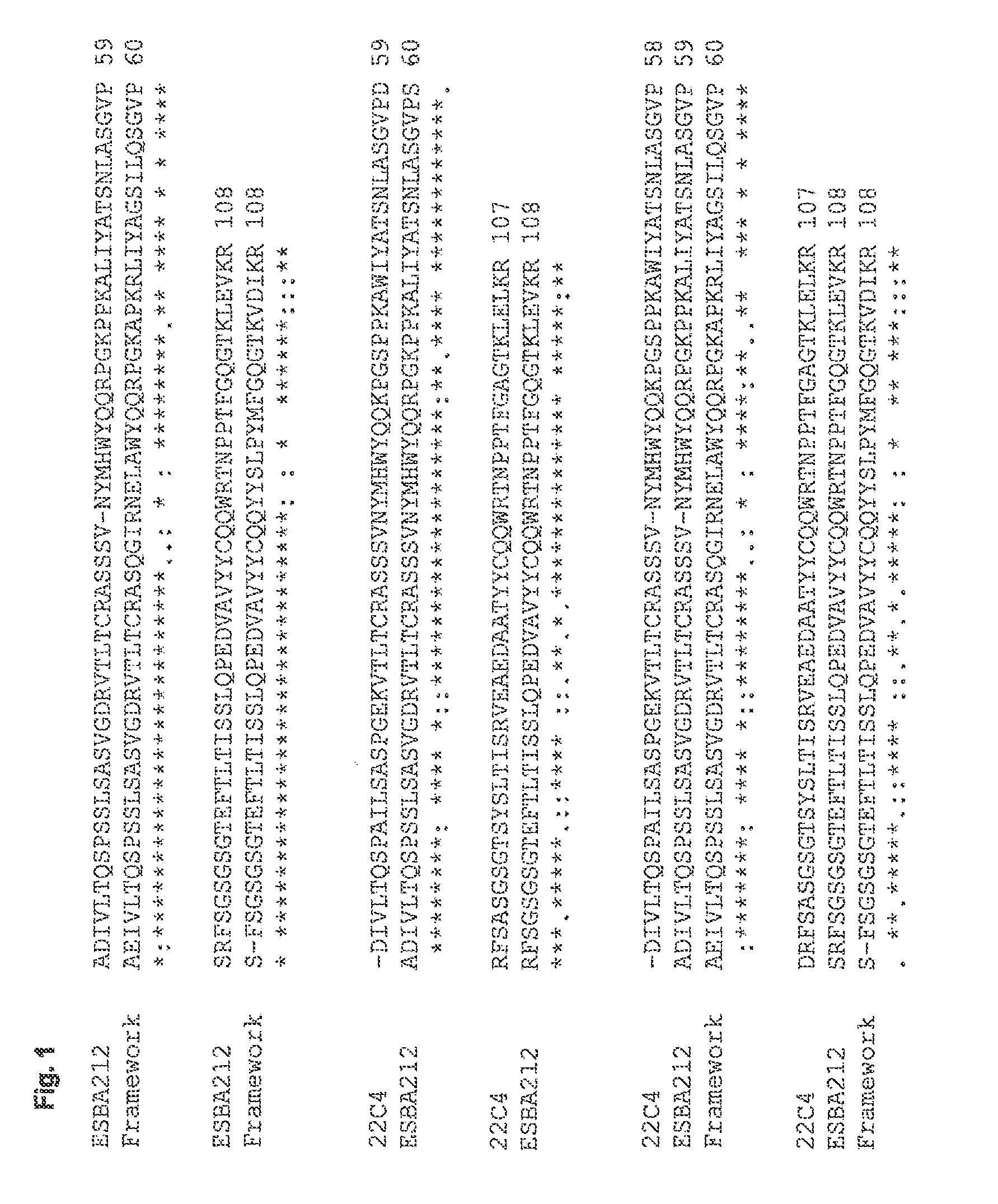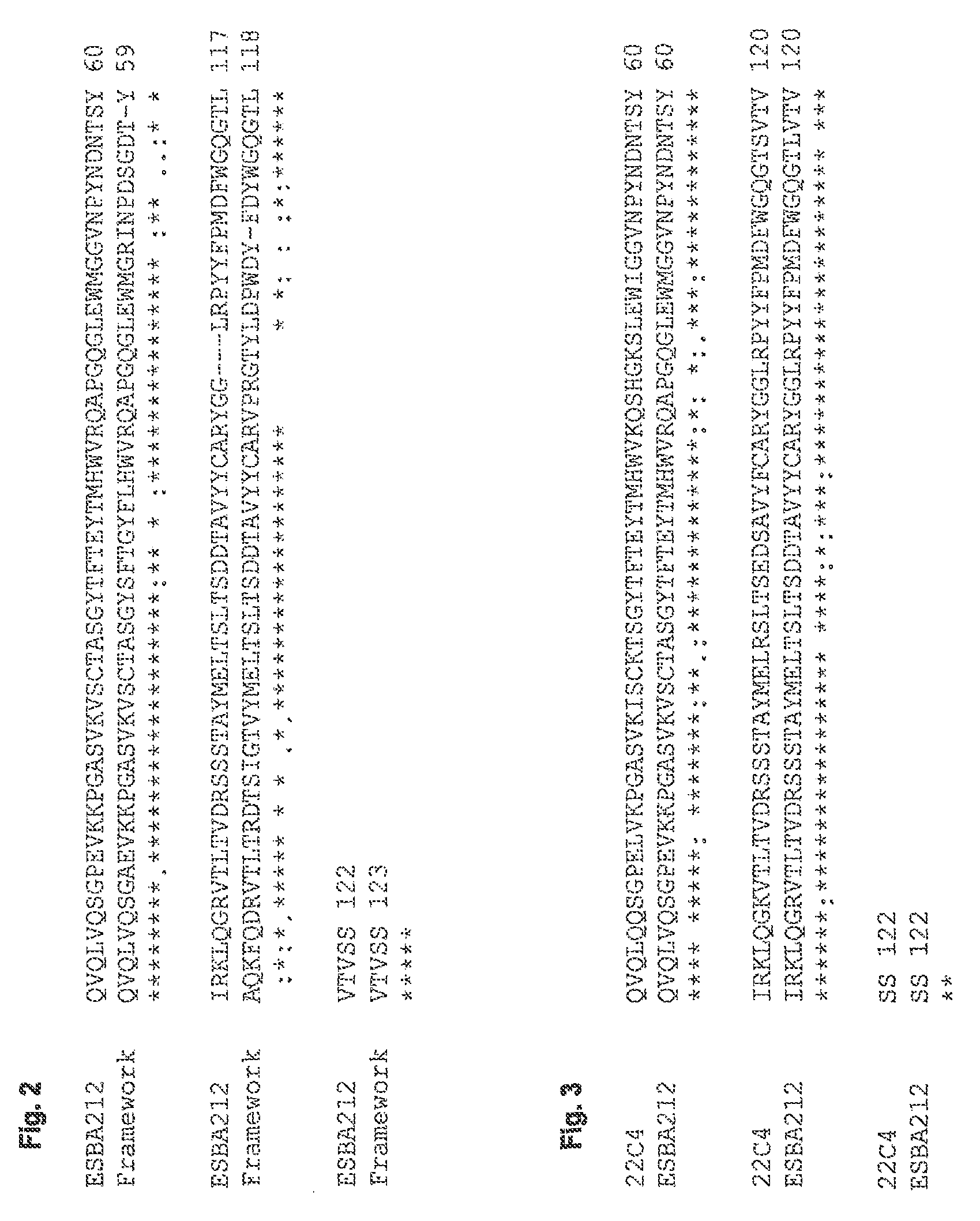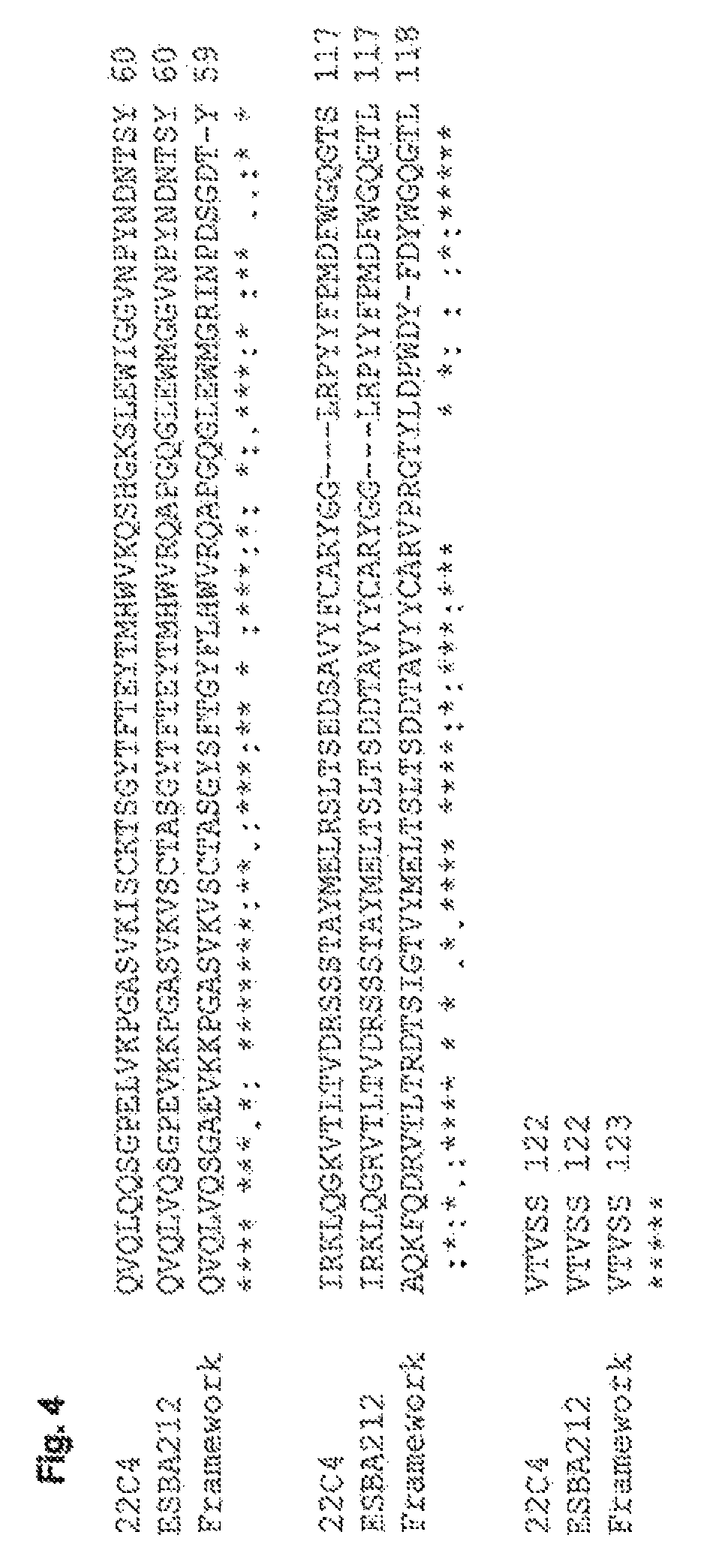Humanized antibodies against the beta-amyloid peptide
a technology of beta-amyloid peptide and humanized antibodies, which is applied in the field of humanized antibodies against beta-amyloid peptide, can solve the problems of limiting the clinical utility of murine antibodies elicited anti-globulin response, and achieve the effect of reducing abeta levels in vivo and improving cognition after administration of an effective amoun
- Summary
- Abstract
- Description
- Claims
- Application Information
AI Technical Summary
Benefits of technology
Problems solved by technology
Method used
Image
Examples
example 1
Generation of ESBA212
[0113]The antigen-binding portions of the single chain antibody ESBA212 emanate from the murine antibody 22C4, identified by the University of Zurich. The Abeta-specific mouse IgG antibody 22C4 was generated by immunizing mice with Abeta30-42 and is thus directed against the C-terminus of Abeta. The cloning of the VL and the VH domains was done by RT-PCR according to Burmester and PlUckthun (2001). Briefly, the mRNA was derived from hybridoma cells producing the antibody 22C4. An RT-PCR using the primers described by Burmester and Pluckthun was performed to amplify the VL and VH domains. The two domains were assembled by a SOE-PCR (splicing by overlap extension). Then the amplified single chain variable fragment (scFv) was digested by SfiI, cloned into a suitable expression vector and sequenced. Thus a mouse scFv fragment was obtained which kept its specificity for Abeta42. Said scFv was humanized leading to the single chain antibody ESBA212 (see FIGS. 1 to 4 fo...
example 2
Binding to Amyloid Plaques on Tissue Sections
[0115]In order to test whether the scFv ESBA212 was able to recognise Abeta, ex vivo immunostainings of brain tissues containing amyloid plaques were performed. Therefore, brain tissue sections from various transgenic mice (SweArc, SwePS1) that express human APP leading to the formation of Abeta plaques and brain sections from human Alzheimer's patients were used.
[0116]ESBA212 reacted with amyloid plaques on both 25 cryo and paraffin sections from mice independent of the Alzheimer's mouse model used (FIG. 5). ESBA212 also stained plaques on fixed human Alzheimer's tissue (FIG. 6A). Especially around the vessels a strong staining could be observed that is known as amyloid angiopathy. Amyloid angiopathy refers to the deposition of beta-amyloid in the small and mid-sized vessels of the cerebral cortex and the leptomeninges. However, ESBA212 does not bind to amyloid plaques on human cryo sections, neither on non-fixed (FIG. 6B) nor on post-fi...
example 3
Binding to Abeta42 Monomers
[0119]It could be shown by size exclusion chromatography that ESBA212 bound to FITC-labelled Abeta 42. ESBA212 was co-incubated with FITC-Abeta42 and loaded onto a column. ESBA212 and FITC-Abeta42 were eluted together (FIG. 8A) as the peak for ESBA212 and the one for FITC-Abeta42 overlapped exactly and also showed a size shift of 5 kDa compared to ESBA212 alone (data not shown), therefore representing bound FITC-Abeta42 (5 kDa). However, when FITC-Abeta42 was incubated with the framework FW2.3, which contains the same framework region as ESBA212 but no Abeta-specific CDRs, there were two clearly distinct peaks observed one for the scFv and a second one for FITC-Abeta42 (FIG. 8B).
PUM
 Login to View More
Login to View More Abstract
Description
Claims
Application Information
 Login to View More
Login to View More - R&D
- Intellectual Property
- Life Sciences
- Materials
- Tech Scout
- Unparalleled Data Quality
- Higher Quality Content
- 60% Fewer Hallucinations
Browse by: Latest US Patents, China's latest patents, Technical Efficacy Thesaurus, Application Domain, Technology Topic, Popular Technical Reports.
© 2025 PatSnap. All rights reserved.Legal|Privacy policy|Modern Slavery Act Transparency Statement|Sitemap|About US| Contact US: help@patsnap.com



